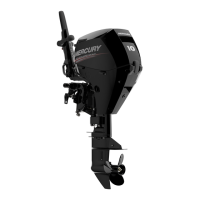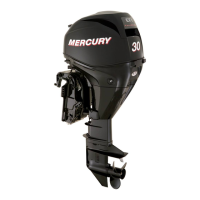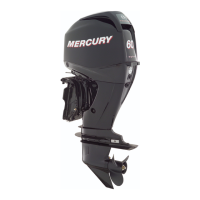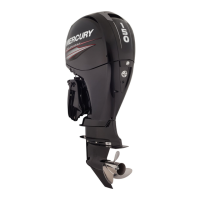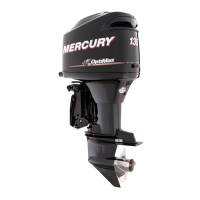Attributes Specification
Trim/tilt range –4° to 76°
Battery requirements
Above 0 °C (32 °F) 465 MCA, 350 CCA
Below 0 °C (32 °F) 800 MCA, 775 CCA
Sound at drivers ear (ICOMIA 39‑94) dBA 84.5
Tiller handle vibration (ICOMIA 38‑94) m/s² 2.58
Conditions Affecting Performance
WEATHER
It is a known fact that weather conditions exert a profound effect on the power
output of internal combustion engines. Established horsepower ratings refer to
the power the engine will produce at its rated RPM under a specific
combination of weather conditions.
Corporations internationally have settled on adoption of International Standards
Organization (ISO) engine test standards, as set forth in ISO 3046
standardizing the computation of horsepower from data obtained on the
dynamometer. All values are corrected to the power the engine will produce at
sea level, at 30% relative humidity, at 25 °C (77 °F) temperature, and a
barometric pressure of 29.61 inches of mercury.
Summer conditions of high temperature, low barometric pressure, and high
humidity all combine to reduce the engine power. This, in turn, is reflected in
decreased boat speeds as much as 3 to 5 km/h (2 to 3 MPH) in some cases.
Nothing will regain this speed for the boater but cooler, dry weather.
Pointing out the consequences of weather effects, an engine running on a hot,
humid day may encounter a loss of as much as 14% of the horsepower it would
produce on a dry, brisk day. The horsepower that any internal combustion
engine produces, depends upon the density of the air that it consumes. The
density of air is dependent upon the ambient air temperature, the barometric
pressure, and the humidity (water vapor) content.
Accompanying the effects of weather inspired loss of power is a second, but
more subtle loss. Consider a boat rigged during cooler, less humid weather
with a propeller that allowed the engine to turn within its recommended RPM
range at full throttle. Higher temperatures with high humidity weather will
consequently decrease the available horsepower. The propeller, in effect, is too
large for the atmospheric conditions and the engine operates at less than its
recommended RPM.
The engine‑rated horsepower is a direct relation to the engine's RPM. An
engine with too large of a propeller will have a further loss of horsepower and
subsequent decrease in boat speed. This secondary loss of RPM and boat
speed can be regained by switching to a smaller pitch propeller that allows the
engine to run at recommended RPM.
GENERAL INFORMATION
18 eng
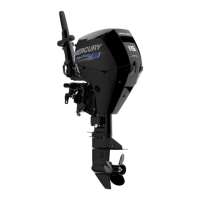
